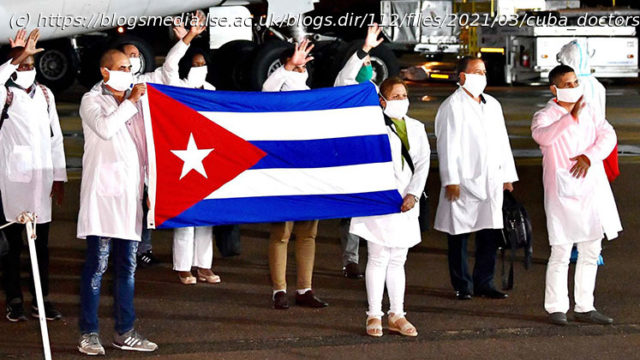All Global Research articles can be read in 51 languages by activating the “Translate Website” drop down menu on the top banner of our home page (Desktop version). Visit and follow us on Instagram at @crg_globalresearch. *** Despite its limited material resources, Cuba is responsible for developing two of only 23 coronavirus vaccines to have entered phase …
Visit and follow us on Instagram at @crg_globalresearch. *** When COVID-19 arrived in Cuba, the government immediately mobilised its comprehensive public healthcare system and world-leading biotech sector. This decisive action has allowed Cuba to keep both contagion and fatality rates at very low levels. In 2020, Cuba had a total of 12,225 coronavirus cases and 146 deaths from a population of 11.2 million, which are amongst the lowest rates in the Western Hemisphere. In November 2020, however, the reopening of airports led to a new surge, with more infections in January 2021 than in the whole of the previous year. Yet by 24 March 2021, Cuba had registered fewer than 70,000 cases and 408 deaths. The death rate was 35 per million, as compared to 1,857 per million people in Britain, for example. The fatality rate amongst those infected was just 0.59%, compared to an average of 2.2% worldwide and 2.9% in Britain. By that point,57 brigades of medical specialists from Cuba’s Henry Reeve International Contingent had been sent to treat 1.26 million coronavirus patients in 40 countries, adding to the 28,000 Cuban healthcare professionals working in 66 countries around the world. Then, in March 2021, Cuba began phase III clinical trials for two domestically produced COVID-19 vaccines, with three other candidate vaccines also in the pipeline. These accomplishments are all the more extraordinary when we consider that since 2017 the US government has unleashed 240 new sanctions, actions, and measures aimed at tightening the 60-year blockade of Cuba. Some 50 of these measures were introduced during the pandemic itself, costing the health sector alone over $200 million. Some 200 COVID-19 vaccines are being developed worldwide, and 23 candidates have advanced to phase III clinical trials (as of 25 March 2021). Though no other Latin American country has developed a vaccine of its own, two of the 23 now in phase III trials are Cuban: Soberana 02 and Abdala. And Cuba also has three other vaccine candidates in earlier stage trials: Soberana 01, Soberana Plus, and Mambisa. So how has Cuba managed to develop five COVID-19 vaccines in such a short time? Cuba’s biotech sector is unique. It is entirely state-owned and free of private interests, with innovation channelled to meet public health needs and no profit-seeking in the domestic market. Dozens of research and development institutions collaborate, sharing resources and knowledge instead of competing, which facilitates a fast track from research and innovation to trials and application. Cuba has the capacity to produce 60-70% of the medicines it consumes domestically, an imperative due to the US blockade and the cost of medicines in the international market. There is also continuous and comprehensive circulation of information and personnel between universities, research centres, and the public health system. These various elements have proven vital in the development of Cuba’s COVID-19 vaccines. There are five types of COVID-19 vaccines being developed globally: The five Cuban vaccines undergoing clinical trials are all protein vaccines. This means that they carry a portion of the spike protein that the virus uses to bind to human cells, which in turn generates neutralising antibodies that block this binding process. Dr Marlene Ramírez González explained to the British Medical Journal that the Cuban vaccines are subunit vaccines, “one of the most economical approaches, and the type for which Cuba has the greatest know-how and infrastructure… [They are] based only on the part [of the COVID antigen] that is involved in contact with the cell’s receptor [the receptor-binding domain], which is also the one that induces the greatest amount of neutralizing antibodies”.






